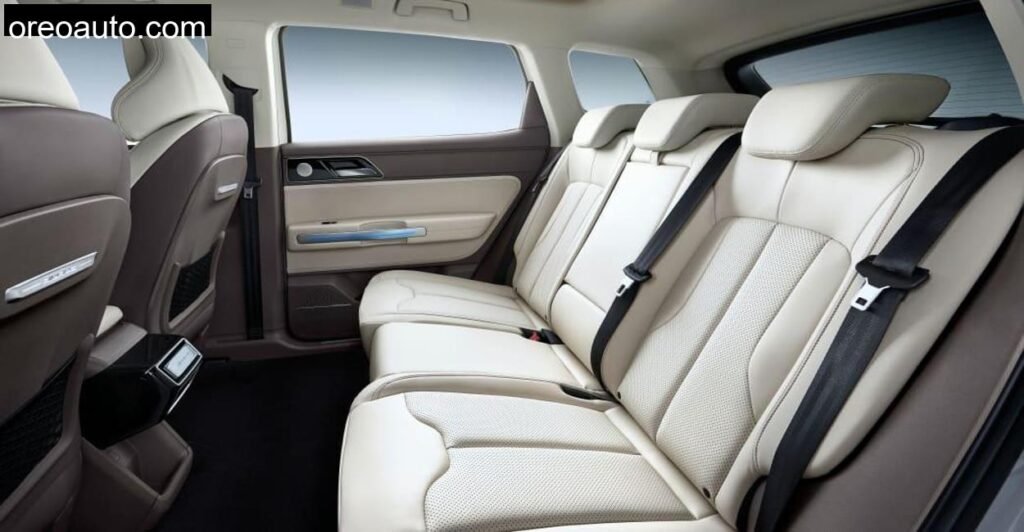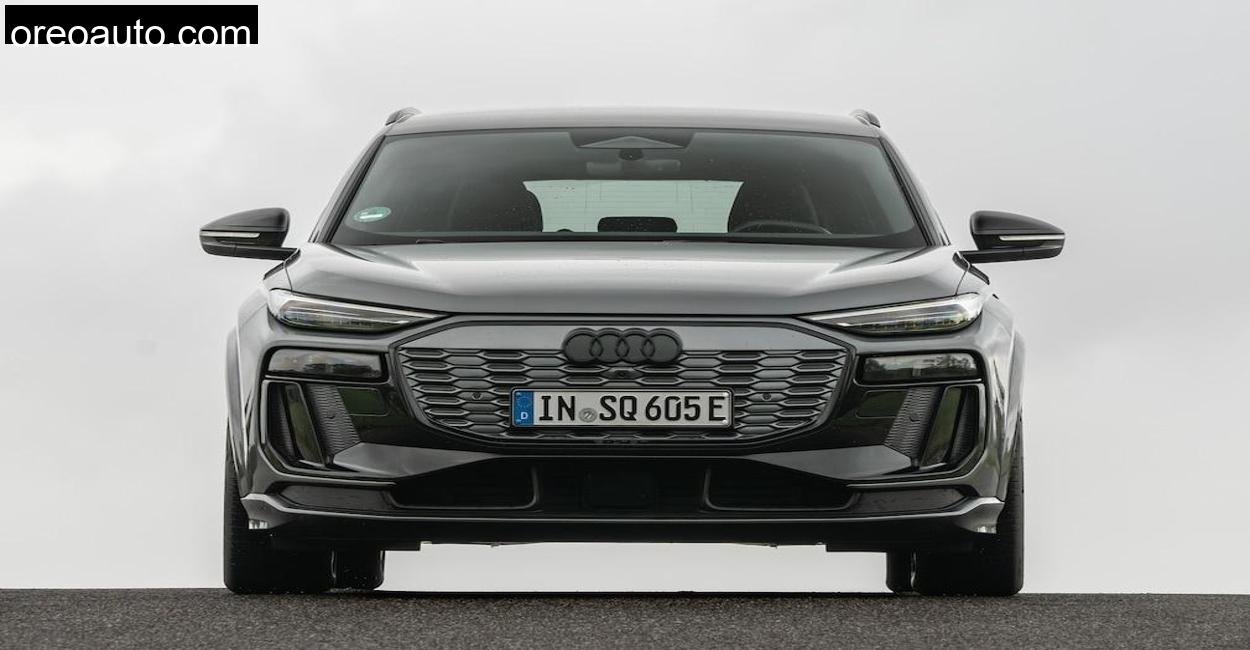Somewhere between Schlüchtern and Fulda, where the hills roll softly and the traffic thins to a gentle hum, lies the Landrücken, a modest but serene mountain ridge in Hesse, Germany. It’s not where you’d expect to form your opinions about the future of electric mobility, but it was exactly where I found myself one rainy Wednesday morning behind the wheel of the Aiways U5. The name might not ring familiar bells to most Europeans yet, but the experience? That stuck.
I’ve driven a fair share of electric SUVs, from the precise German execution of the Audi Q4 e, tron to the flamboyant American torque of the Mustang Mach, E. But the U5, built in China and sold at a price that made me double, check the spec sheet, was a wildcard. The ADAC gave it a 2.5 grade, not perfect, but in no way a red flag. So I took it to Landrücken, not only for its soft curves and long stretches, but for its ability to reveal a car’s character through elevation, surface changes, and complete silence. And let me tell you, this car has character.
Space First: More Room than it Should Have

My first impression stepping into the Aiways U5 was just how airy and generous everything felt. At 4.68 meters long, it’s slightly shorter than a Mercedes EQC, but feels even roomier. That’s not just good packaging, it’s clever design. I’m 6 feet tall and didn’t need to adjust the driver’s seat more than a notch. Rear passengers? They had space to stretch, recline, and still wouldn’t feel cramped even with three adults in the back. The panoramic roof added to the impression of openness, pouring grey morning light over the dashboard as we climbed the Landrücken.
What really sold it though was the lack of a central transmission tunnel. The flat floor gave it minivan, like versatility, and you genuinely feel like you’ve gained an extra half, seat or storage box.
But then, the irony hits, you get all this room, but the payload is a modest 385 kg. With four adults and a picnic cooler, I was already brushing against the car’s official weight limit. That’s a small ding in an otherwise cavernous package.
Tech Meets Cost: Feature, Rich but Familiar
It took me a moment to get used to the interior. The design is minimalist, think Tesla meets IKEA, with a 12.3, inch touchscreen taking center stage, and physical buttons conspicuously absent. You adjust the mirrors, toggle lights, or change climate zones all via the screen. It’s futuristic in theory, but fiddly in motion. More than once, my finger hit the wrong setting while trying to change regen mode mid, corner on the slopes near Rommerz.
Still, the equipment list reads like a €70k German SUV: LED matrix headlights, adaptive cruise control, 360° cameras, heated seats, a sunroof, traffic sign recognition, the Prime trim had it all. All except a glove box. No joke, they forgot the glove box. I ended up stuffing my registration papers into the seatback pocket and laughing every time I reached to open thin air.
There’s also no native satnav. Aiways expects you to use your phone via Apple CarPlay or Android Auto, and in practice, it works. I had my phone mounted and Waze barking orders as we passed through villages where the road narrows and the terrain suddenly dips.
Road Manners: Smooth Operator in the German Countryside
With 204 hp and 310 Nm of torque, the Aiways U5 doesn’t pretend to be a Tesla, but it doesn’t need to. Acceleration from 0, 100 km/h takes 7.7 seconds, and that’s quick enough for overtakes on country roads or zipping out of a roundabout.
What really impressed me was its quiet confidence. The suspension, clearly tuned for comfort, soaked up the patchy tarmac of Landrücken’s high, altitude lanes. It never felt floaty, but it never felt sporty either, this is not the car you hustle around corners, especially with front, wheel drive that easily runs out of traction in wet bends.
But what it does give you is serenity. Straight, line stability is excellent. Even on uneven roads carved by years of frost and thaw, the U5 just held its line with silent, electric grace. Body roll exists, yes, but it’s well controlled. ESP cuts in early and gently when needed. In fact, during one evasive maneuver test I recreated on a quiet farm road, an homage to the ADAC cone test, the U5 stayed surprisingly composed.
Braking is decent but not outstanding. From 100 km/h, it came to a halt in 36.5 meters. Some rivals do it in 33. But the pedal feel was progressive, and the regen blended smoothly, far better than early EVs I’ve driven.
Charging Stops and Real, World Range: Surprisingly Competitive

As I watched the U5 sip power from a 90 kW DC charger outside Fulda, I couldn’t help but admire its fast, charging logic. From 10% to 80%, it held strong above 70 kW and never dropped prematurely. In my 30, minute coffee break, I regained over 210 km of range. That’s Tesla territory.
The 63 kWh battery (gross) gave me a real, world range of about 290 kilometers during the drive. The official WLTP figure is 400 km, but with my mixed route, half hilly climbs, half autobahn at 130 km/h, 290 felt fair.
My average consumption? About 23.5 kWh/100 km, a little less than ADAC’s measured 24.7. I drove conservatively, with regen in its medium setting and climate control in eco mode. One downside? AC charging is just 11 kW, not bad, but not industry, leading. Still, it’s good enough for overnight recharging.
Build Quality: The Good, the Odd, the Impressive
Back at the lay, by near Herolz, I took a slow walk around the car, hand brushing over the paint, panel gaps, and seals. Aiways has done their homework. The doors close with a solid thunk, and nothing rattled or creaked during our test. The paint had a depth to it I hadn’t expected.
Inside, the foamed materials on the dashboard and felt, lined door pockets gave it a near, premium feel. There are still some areas where cost, cutting shows, like hard plastics low down or the mediocre audio system, but it never feels cheap. Just thoughtfully balanced.
Technical Specifications
For complete accuracy and consistency, all technical content is sourced from Aiways’s official platform.
| Specification | Aiways U5 Prime (2022) |
| Powertrain | 150 kW electric motor (204 hp) |
| Torque | 310 Nm |
| Acceleration (0, 100 km/h) | 7.7 seconds |
| Top Speed | 160 km/h |
| Battery Capacity (Gross) | 63.0 kWh |
| Charging (AC) | 11.0 kW |
| Charging (DC) | 90.0 kW |
| Range (WLTP) | 400 km |
| Real, world Range (Tested) | ~290 km |
| Consumption (Tested Avg.) | 23.5 kWh/100 km |
| Boot Space (Standard) | 432 liters |
| Boot Space (Max) | 1,555 liters |
| Dimensions (L x W x H) | 4,680 x 1,865 x 1,700 mm |
| Unbraked Towing Capacity | 750 kg |
| Braked Towing Capacity | 1,500 kg |
| Curb Weight | 1,770 kg |
| Payload | 385 kg |
| Base Price (Germany) | €46,529 (as tested: €45,547) |
Conclusion: A Budget EV That Feels Anything But
The Aiways U5 isn’t perfect, but for a first effort from a young Chinese brand, it’s exceptional in many of the right places. It doesn’t shout about performance or style. It quietly nails space, comfort, efficiency, and value. On the Landrücken roads, where most electric SUVs show their true character, this one proved that a “budget EV” doesn’t have to feel compromised.
Would I buy one? Honestly, if you’re looking for a daily, use family SUV with electric ambition and a price tag that undercuts the usual suspects by ten grand or more, the U5 should absolutely be on your list.
Is the Aiways U5 really made in China?
Yes, the U5 is manufactured in China and assembled with components sourced globally. It arrives in Europe via sea or rail and is serviced in Germany by the ATU network.
Does the Aiways U5 have a built, in navigation system?
No. Aiways opted to skip a native nav system to keep costs low. Instead, you can use your phone via Apple CarPlay or Android Auto
How fast can the U5 charge on a public fast charger?
It supports up to 90 kW DC. In my test, it averaged around 78 kW during a typical session, enough to gain 214 km in 30 minutes.










